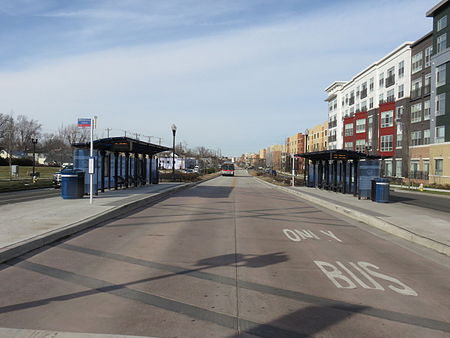Potomac station (Metroway)
2014 establishments in VirginiaBuildings and structures in Alexandria, VirginiaBus stations in VirginiaMetrowayTransport infrastructure completed in 2014 ... and 3 more
United States bus transportation stubsVirginia building and structure stubsVirginia transportation stubs

Potomac is a bus rapid transit station in Alexandria, Virginia, located at the intersection of Richmond Highway (U.S. Route 1) and Potomac Avenue. It is a stop on the portion of dedicated bus-only highway along the Metroway bus rapid transit line, providing two-way service along the route. The station provides service to the southern Potomac Yard and Del Ray communities in Alexandria.
Excerpt from the Wikipedia article Potomac station (Metroway) (License: CC BY-SA 3.0, Authors, Images).Potomac station (Metroway)
Metroway, Alexandria Potomac Yard
Geographical coordinates (GPS) Address Nearby Places Show on map
Geographical coordinates (GPS)
| Latitude | Longitude |
|---|---|
| N 38.822777777778 ° | E -77.05 ° |
Address
Crystal City Transitway & Potomac Ave
Metroway
22301 Alexandria, Potomac Yard
Virginia, United States
Open on Google Maps








